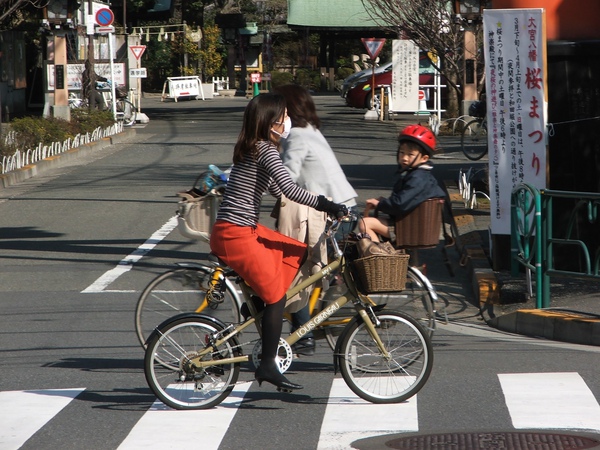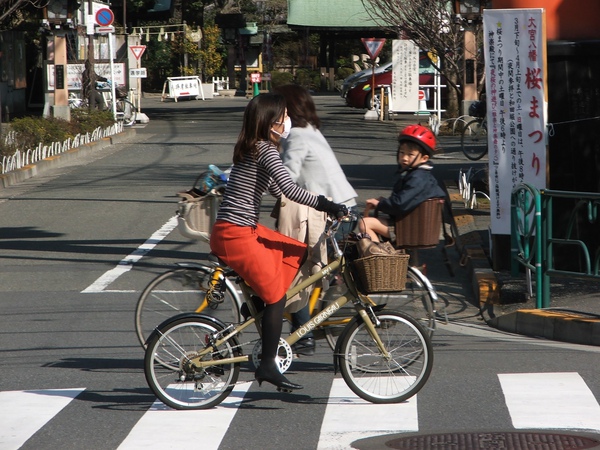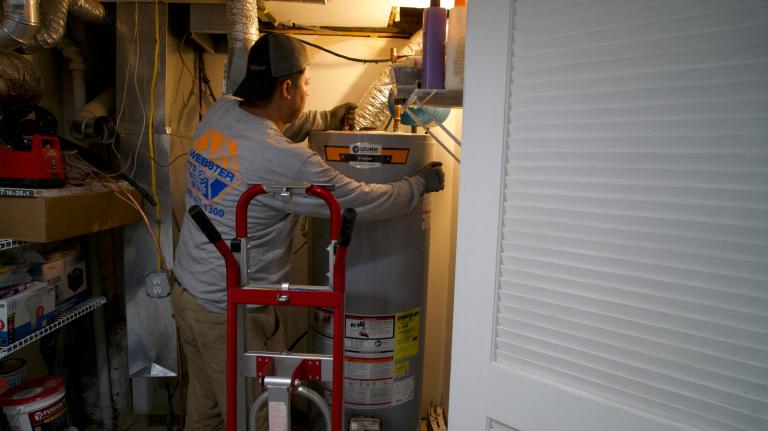 There’s more of this in Tokyo these days.Photo: Byron Kidd
There’s more of this in Tokyo these days.Photo: Byron Kidd
Shortly after last month’s disastrous earthquake and tsunami in Japan, we posted a dispatch from Tokyo by Bike blogger Byron Kidd (@tokyobybike) about how more people were biking to work in the quake’s aftermath.
Today, The New York Times has a story about how the uptick in bicycle commuting seems to be persisting in the weeks following the tragedy:
[Shigeki] Kobayashi, director of [a] bicycle advocacy group, regularly counts the number of bikers passing by a busy boulevard that leads to downtown Tokyo. On a day last November, he counted 105 bicycles from 7 a.m. to 8 a.m. That rose to 243 on March 14, three days after the earthquake and to 330 on March 30.
“The quake has clearly changed the number of bike commuters,” he said. “It resembles the sudden spike in bike commuters in London after the 2005 bombings when public transportation was suspended for a while.”
People who try biking to work quickly discover that finding their way on the meandering Tokyo streets is neither as daunting nor as exhausting as they expected. “With smartphones and Google map, the task is made easy,” Mr. Kobayashi said. “They also notice it is quite a pleasant experience cycling. All together, the earthquake may have triggered a change in lifestyle for many.”
The article also quotes a representative of Panasonic Cycle Technology as saying that the company’s sales of electric bikes are up 30 percent from last year.
When we first ran the story about more people biking in post-quake Tokyo, boy, did we take a lot of grief for it. “Insensitive” and “smug” were among the family-friendly words some of the commenters had for us. There were a lot harsher terms used as well.
So let me be as clear as I can: I don’t see the moral of this story as, “Yay, there was an earthquake, so people are biking more.”
I see it as a profound illustration of how resourceful people, faced with disaster, will adopt resilient technologies in order to do what they need to do in an altered landscape.
Bicycles play a key part in my own family’s disaster-preparedness plan. (There’s a nuclear power plant less than 50 miles from my house, and I do think sometimes about needing to get away from it.) In a world affected by climate change and diminished resources, resilient systems and technologies — including bicycles — could be key to survival.




